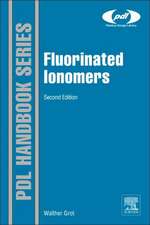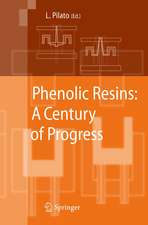Design with Reinforced Plastics: A Guide for Engineers and Designers
Autor R.M. Mayeren Limba Engleză Paperback – 30 iun 1993
Preț: 641.85 lei
Preț vechi: 755.13 lei
-15% Nou
Puncte Express: 963
Preț estimativ în valută:
122.82€ • 128.82$ • 102.24£
122.82€ • 128.82$ • 102.24£
Carte tipărită la comandă
Livrare economică 01-15 aprilie
Preluare comenzi: 021 569.72.76
Specificații
ISBN-13: 9780850722949
ISBN-10: 0850722942
Pagini: 212
Ilustrații: XI, 212 p.
Dimensiuni: 210 x 279 x 12 mm
Greutate: 0.46 kg
Ediția:Softcover reprint of the original 1st ed. 1993
Editura: SPRINGER NETHERLANDS
Colecția Springer
Locul publicării:Dordrecht, Netherlands
ISBN-10: 0850722942
Pagini: 212
Ilustrații: XI, 212 p.
Dimensiuni: 210 x 279 x 12 mm
Greutate: 0.46 kg
Ediția:Softcover reprint of the original 1st ed. 1993
Editura: SPRINGER NETHERLANDS
Colecția Springer
Locul publicării:Dordrecht, Netherlands
Public țintă
ResearchCuprins
1 Conceptual design considerations.- 1.1 Properties.- 1.2 Advantages.- 1.3 Disadvantages.- 1.4 Design brief and conceptual design.- 1.5 Conceptual design of a housing.- 1.6 Reference information.- 2 Embodiment design considerations.- 2.1 Conceptual design.- 2.2 Embodiment design.- 2.3 Detailed design.- 2.4 Materials options.- 2.5 Material properties.- 2.6 Process selection.- 2.7 Shape, form and joints.- 2.8 Embodiment design.- 2.9 Function, volume and cost.- 2.10 Environmental impact.- 2.11 Reference information.- 3 Detailed design considerations.- 3.1 Shape, size and finish.- 3.2 Load paths and reinforcement selection.- 3.3 Strength and stiffness.- 3.4 Damage accumulation, tolerance and failure.- 3.5 Loading modes.- 3.6 Effect of temperature.- 3.7 Environmental effects.- 3.8 Joints.- 3.9 Recycling and reclamation.- 3.10 Reference information.- 4 Safety, standards and codes.- 4.1 Single market.- 4.2 Product liability.- 4.3 Health and safety.- 4.4 Standards and codes.- 4.5 Quality systems.- 4.6 General design codes.- 4.7 Specific design codes.- 4.8 Design considerations for fire.- 4.9 Fire safety.- 4.10 Reference information.- 5 Materials and properties.- 5.1 Fibres.- 5.2 Mats and fabrics.- 5.3 Resins.- 5.4 Compounds and intermediate products.- 5.5 Composites.- 5.6 Reference information.- 6 Manufacturing considerations.- 6.1 Process selection.- 6.2 Contact moulding.- 6.3 Press moulding.- 6.4 Resin transfer moulding.- 6.5 Centrifugal moulding.- 6.6 Filament winding.- 6.7 Pultrusion.- 6.8 Prepreg moulding.- 6.9 Injection moulding.- 6.10 Reference information.- 7 Testing and standards.- 7.1 Standards and test methods.- 7.2 Material anisotropy.- 7.3 Pyramid of substantiation.- 7.4 Fibre, matrix and intermediate materials test methods.- 7.5 Coupon test methods for mechanicalproperties.- 7.6 Test methods for non-mechanical properties.- 7.7 Assessment of rate, temperature and environmental effects.- 7.8 Assessment of the effect of creep and fatigue loads.- 7.9 Finished product test methods.- 7.10 Component, structure and system testing.- 7.11 Quality assurance and nondestructive evaluation.- 7.12 Reference information.- 8 Design studies.- 8.1 Golf club shaft.- 8.2 Road wheel.- 8.3 Novel car suspension system.- 8.4 Tennis racket.- 8.5 Reference Information.













